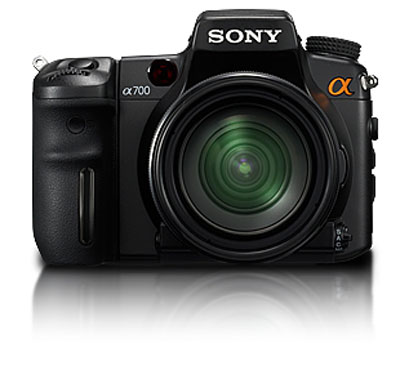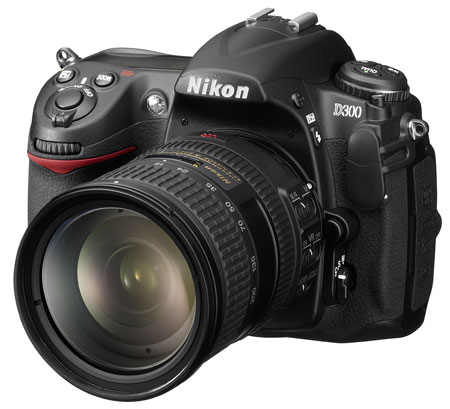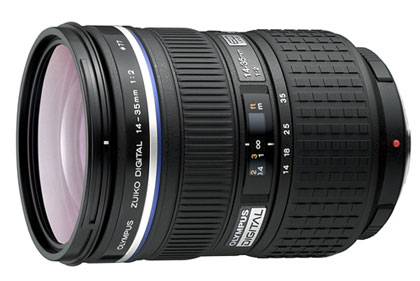Digital Camera Buyers' Guide - Year of the SLR
by Wesley Fink on November 23, 2007 6:00 AM EST- Posted in
- Digital Camera
Prosumer SLRs
It seems everyone is introducing new prosumer models. Understanding what's hot in this market of hard-to-please photography buffs will help you know what to look for in an entry-level camera. If you're in the market for one of these advanced amateur DSLRs, you may want to pay closer attention.

Sony started this prosumer round, just as they started the 10 megapixel (MP) round last year. The new top-of-the-line Sony is now their $1400 A700. Those who doubted that Sony was in the digital SLR market to win were greeted with a slick, stylish, and very fast 12.2MP DSLR with image stabilization, auto dust cleaning, a 3" hi-res LCD, 5.0FPS shooting, and new Sony brand lenses. Conspicuously absent is Live View, a feature pioneered by Olympus on DSLR cameras that allows the user to see through the lens on the LCD. This is standard fare on a point-and-shoot, but difficult to do with the "through-the-lens" optical viewing that is a feature of SLR technology.

Because they are so huge and influential in the photo market, Canon prosumer models receive lots of scrutiny. The new Canon model is the 40D, which continues the 20D/30D models that have defined the Canon prosumer DSLR. The 30D is 8MP and the 40D raises that to 10MP. Many expected an even higher-resolution 40D, but instead the 40D features the same 10MP resolution seen in the entry-level Canon XTi for the past year. New for the $1300 40D is much faster auto-focus, a 3" LCD replacing the 2.5", dust cleaning on startup, dust sealing, and Live View - a first for Canon. There are many other improvements, but they refine existing features of the Canon line.

Nikon announced - but has not shipped - the new D300, which is an update to the D200. The D200 got lost in the wake of the entry-level D80 last year. Nikon uses Sony sensors with their own electronics, and it appears the new D300 uses the same Sony 12.2MP CMOS sensor with on-sensor noise reduction found in the Sony A700. The D300 will launch at a street price of about $1800. The D300 also features a 3" hi-res LCD, very fast autofocus, Nikon's first auto sensor-cleaning system, 6FPS shooting, dust/splash sealing, and Live View.

Olympus has come to life recently, just when many had all but given up on them. Always the innovator, Olympus pioneered auto dust cleaning and Live View on digital SLR cameras based on their "digital-only" 4/3 standard. However, the Olympus 4/3 system was getting very long in the tooth, with a 5.5MP pro model E-1 introduced in 2003. Olympus has just started shipping their new E-3 flagship, which thoroughly updates the Olympus system.
Olympus says the E-3 is their pro model, and it features dust and splash sealing for both the E-3 body and pro lenses. The E-3 also introduces the first new AF module for Olympus in many years. The new AF, which was long overdue, features 11 cross-type sensors, each on two planes, for a total of 44 segments. According to Olympus, the result is the fastest auto focusing SLR you can buy when used with their new SWD (Sonic Wave Drive) lenses, such as their new 12-60mm f2.8-4.0 (24mm-120mm equivalent). The street price of $1699 is much less expensive that the $5000+ entry price for Nikon and Canon pro models. Many, however, feel the real competition for the E-3 is the "prosumer" Nikon D300 and Canon 40D.
The E-3 is also the first Olympus pro model to feature built-in flash, and it's dust and splash sealed. Auto sensor cleaning is a feature, image stabilization is built in and works with all lenses, and the latest incarnation of Live View with a fold out articulating LCD screen is featured. The LCD screen is 2.5", and not the 3" screen of competing models, but competing models don't have a flip-out LCD. Resolution is 10MP, but the E-3 supports ISO-3200 and it is definitely the low-noise camera many didn't think was possible with the smaller 4/3 sensor.
Canon ditched their FD breech mount years ago when they first introduced the EOS autofocus system. That risky move has paid off handsomely for Canon with their current line of all electronic, lens-motor driven lenses. Olympus took a similar tact by ditching their OM mount for an all-electronic mount for digital cameras. However, Olympus didn't have the influence of a Canon when they championed a smaller 4/3 standard sensor and claimed that lenses needed different designs for best digital performance. This was regarded by most of us as marketing-speak, but recent reviews of Olympus glass are showing their 4/3 lens designs - even their cheap kit lenses - do have less light fall-off and are generally sharper in digital photography than competing systems using APS-C or 35mm lenses.

The bottom line is the E-3 and recent Olympus lenses like the pro 14-35 f2.0 zoom (equivalent 28-70mm) and the tiny, cheap, but excellent quality 40-150mm (equivalent 80-300) f4.0-5.6 kit lens may finally gain Olympus the respect in the digital SLR market that has eluded them up to now.










74 Comments
View All Comments
xoham - Monday, January 7, 2008 - link
In my view, Canon is great. I would prefer that they integrated the image stabilization into the camera body like their competitors but I am otherwise very happy with my Canon.Consider this site for, perhaps, better digital camera reviews:
dpreview . com
I think this website is important enough to see that I created an account here just to tell you about it.
xoham - Monday, January 7, 2008 - link
In my view, Canon is great. I would prefer that they integrated the image stabilization into the camera body like their competitors but I am otherwise very happy with my Canon.Consider this site for, perhaps, better digital camera reviews:
http://www.dpreview.com/">http://www.dpreview.com/
I think this website is important enough to see that I created an account here just to tell you about it.
xoham - Monday, January 7, 2008 - link
In my view, Canon is great. I would prefer that they integrated the image stabilization into the camera body like their competitors but I am otherwise very happy with my Canon.Consider this site for, perhaps, better digital camera reviews:
http://www.dpreview.com/">http://www.dpreview.com/
I think this website is important enough to see that I created an account here just to tell you about it.
xoham - Monday, January 7, 2008 - link
In my view, Canon is great. I would prefer that they integrated the image stabilization into the camera body like their competitors but I am otherwise very happy with my Canon.Consider this site for, perhaps, better digital camera reviews:
http://www.dpreview.com/">http://www.dpreview.com/
I think this website is important enough to see that I created an account here just to tell you about it.
xoham - Monday, January 7, 2008 - link
In my view, Canon is great. I would prefer that they integrated the image stabilization into the camera body like their competitors but I am otherwise very happy with my Canon.Consider this site for, perhaps, better digital camera reviews:
http://www.dpreview.com/">http://www.dpreview.com/
I think this website is important enough to see that I created an account here just to tell you about it.
ChibiKitty - Tuesday, December 4, 2007 - link
Up until I read these comments I had no idea what Pentax was or what they produce. I've been looking to replace my water logged camera for a while now (it wet at the beach). I'll have to look into Pentax some more.....rodspade - Wednesday, November 28, 2007 - link
For those of us who aren't already camera mavens, it would have been nice to have the term "SLR" explained.melgross - Wednesday, November 28, 2007 - link
Single Lens Reflex.It means that you are looking through the taking lens, rather than through a viewfinder that is separate.
It uses a mirror in front of the film, or sensor, that flips up right before the picture is taken, and then right back down again. The mirror usually also reflects the light to the meter, which is usually in the area of the prism, on top of the camera (the bump you see on top).
The prism also enables the reflected light from the mirror to be projected out the back, and top of the camera, where the viewfinder is.
some cheaper digital cameras also allow viewing through the lens, but use no mirror, and show the image on a small, magnified, display inside the viewfinder. This is called "live view".
While such a camera is a single through the lens viewing camera, it's not a reflex, because it doesn't use a prism, which is where the term reflex comes from.
Some new D-SLR's now have live viewing as well, but under limited conditions, not as a general purpose function.
I hope that helped. If it's still not clear, ask more questions.
Morro - Monday, November 26, 2007 - link
As far as I remember according to dpreview Sony A100 has terrible noise at ISO 800 and higher. It is quite a original choice to pick a camera with 400 ISO max. for low light.drwho9437 - Monday, November 26, 2007 - link
Seriously, this isn't even remotely a good write up of the field. Pentax excluded as many have mentioned, Sony suggested for its paper features. If you are blown away by what is on the data sheet this is the review for you, otherwise read something half real at dpreview.Stick to computers anandtech (not that anyone but Anand and Johan do a good job at that here either), or hire someone good.